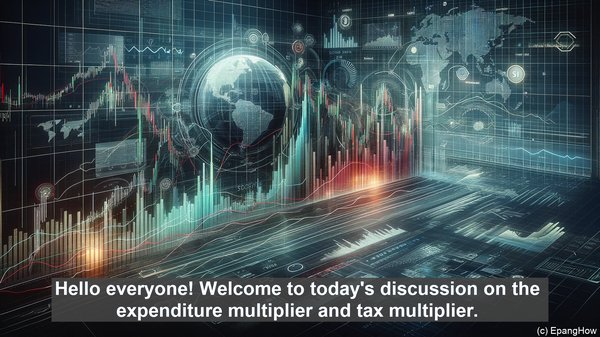Introduction: The Power of Multipliers
Hello everyone! Welcome to today’s discussion on the expenditure multiplier and tax multiplier. In the realm of macroeconomics, these multipliers play a crucial role in understanding the impact of fiscal policies. While both are significant, they operate in distinct ways, making it essential to grasp their nuances. So, let’s dive in!
Defining the Expenditure Multiplier
The expenditure multiplier, often denoted as ‘k’, measures the change in the overall output or Gross Domestic Product (GDP) resulting from an initial change in autonomous expenditure. Autonomous expenditure refers to spending that is not influenced by changes in income or other economic factors. The formula for the expenditure multiplier is straightforward: k = 1 / (1 – MPC), where MPC represents the marginal propensity to consume. In simpler terms, the expenditure multiplier indicates how much the GDP will increase or decrease in response to changes in spending.
Unpacking the Tax Multiplier
Now, let’s shift our focus to the tax multiplier. As the name suggests, this multiplier gauges the impact of changes in taxes on the overall economy. While the expenditure multiplier primarily considers changes in spending, the tax multiplier concentrates on the effects of fiscal policies related to taxation. Similar to the expenditure multiplier, the tax multiplier has a formula: k = -MPC / (1 – MPC). Here, the negative sign signifies the inverse relationship between taxes and GDP. In other words, an increase in taxes leads to a decrease in GDP, and vice versa.

The Role of Marginal Propensity to Consume
To comprehend the differences between these multipliers, it’s crucial to grasp the concept of the marginal propensity to consume (MPC). MPC refers to the proportion of additional income that individuals or households spend rather than save. In the case of the expenditure multiplier, a higher MPC translates to a larger multiplier value, indicating a more significant impact on GDP. Conversely, for the tax multiplier, a higher MPC implies a smaller multiplier, as the inverse relationship between taxes and GDP is stronger.
Implications for Fiscal Policies
The disparities between these multipliers have significant implications for policymakers. Suppose the government aims to stimulate economic growth. In that case, an increase in government spending, which is a component of the expenditure multiplier, can be an effective strategy. On the other hand, if the objective is to control inflation or reduce the budget deficit, altering tax rates, as analyzed through the tax multiplier, becomes a viable option. The choice between these strategies depends on the prevailing economic conditions and policy goals.

